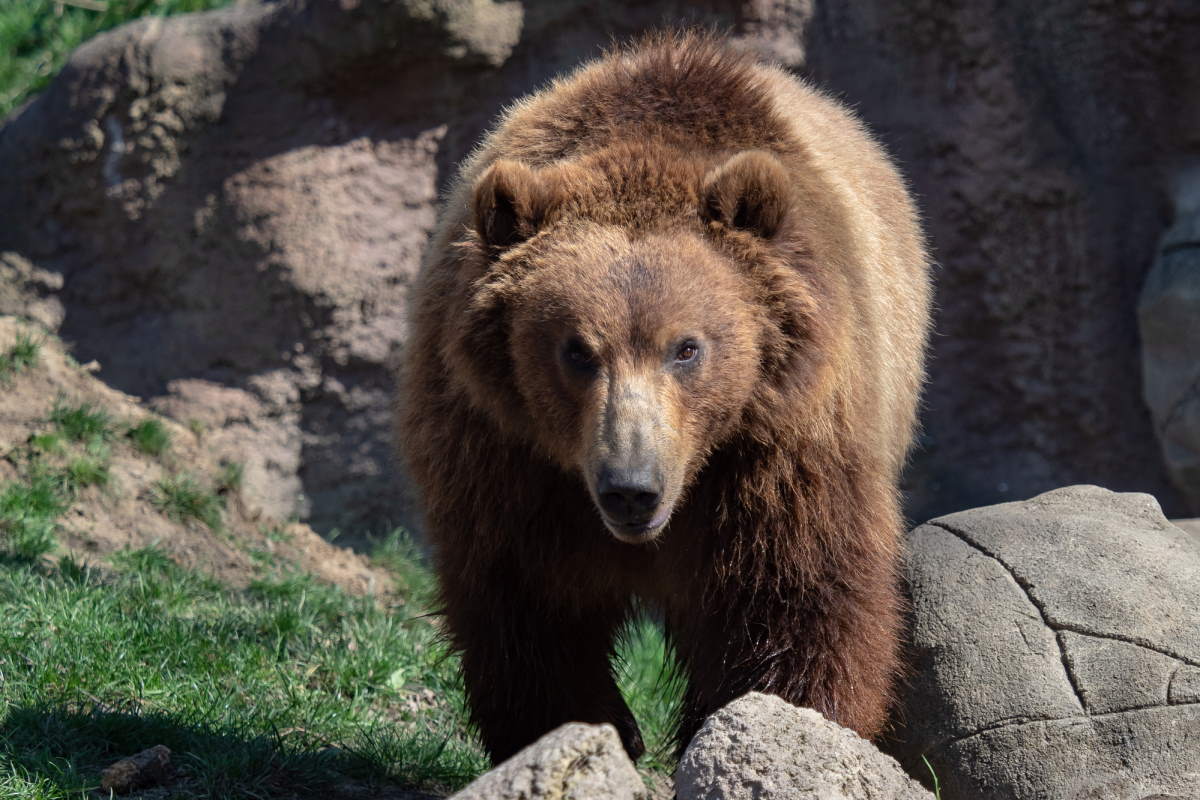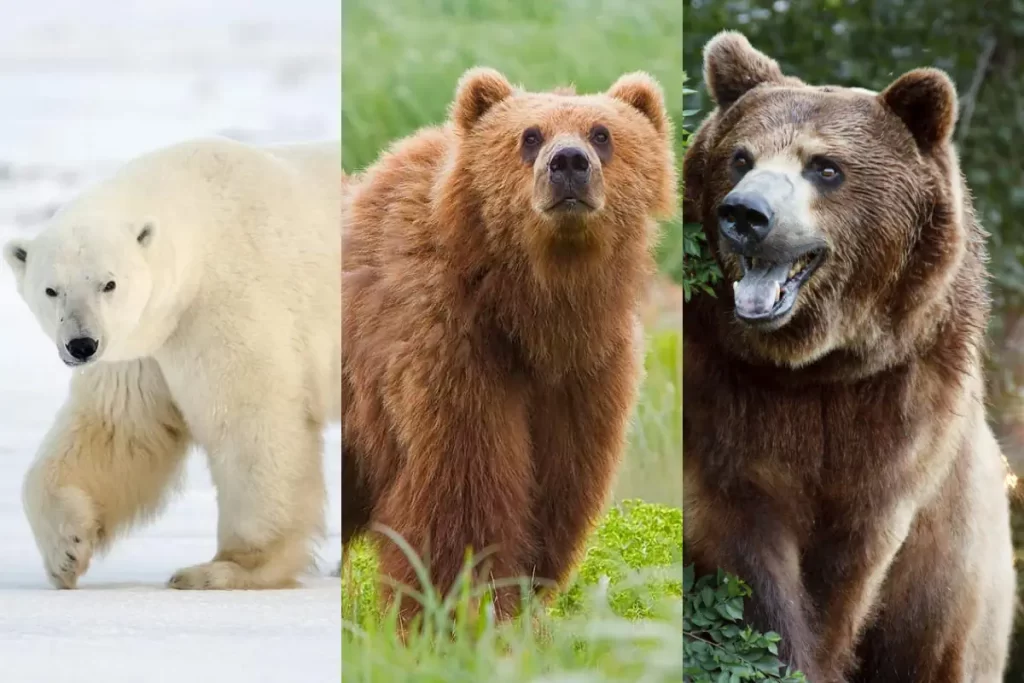The Kamchatka brown bear (scientific name: Ursus arctos beringianus) is a subspecies of brown bear. They are native to the Kamchatka Peninsula in the Russian Far East, hence the name. They are also known as the “Far Eastern brown bear”. Here are 10 amazing Kamchatka brown bear facts.
1. They are huge
In the 18th century, the first Europeans to come to the Kamchatka peninsula were surprised by the huge sizes of brown bears (and also by their number).
Kamchatka brown bear is the biggest bear in Eurasia. They are actually almost as big as the Kodiak bear, one of the biggest bear species in the world (the others being the polar bear).
Male Kamchatka brown bears can have a body length of 2.4 meters (7.9 feet) to 3 meters (9.8 feet) tall on hind legs, and a weight of up to 650 kg (1,430 lb).
Their paws and claws are also huge
Kamchatka Brown Bears’ paws are also huge. They can be as large as 13 inches (33 cm) across. Their claws can grow up to 4 inches (10 cm).
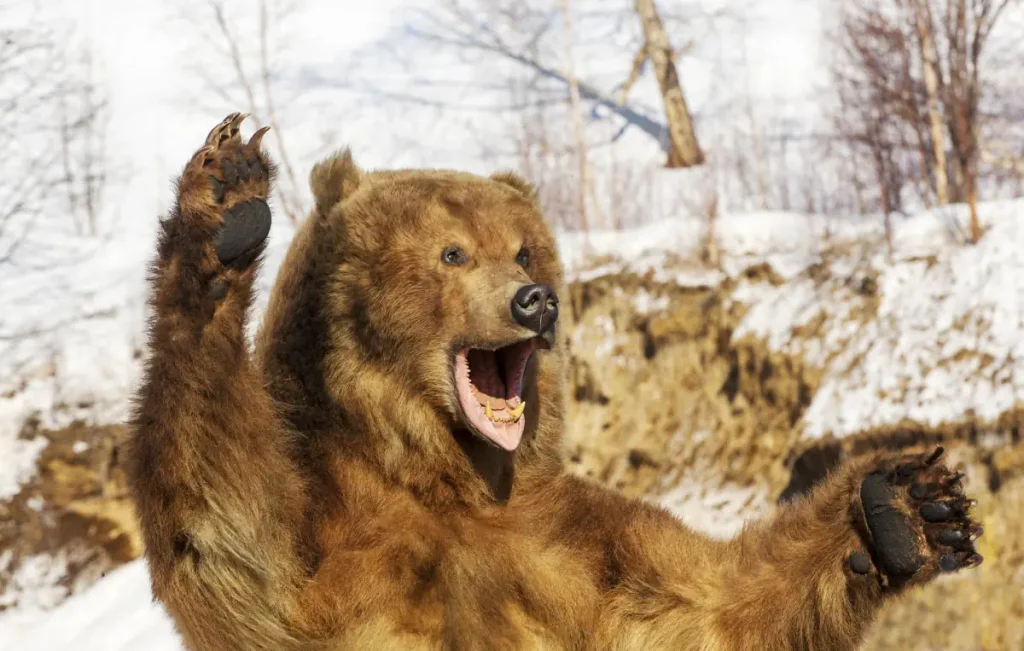
2. Kamchatka brown bears are omnivores
They eat both animals and plants. But, like pandas, they have the digestive system of carnivores, so they are classified as Carnivora, despite plants making up a large portion of their diet, with some estimates as high as 80-90%.
They eat whatever they find: Salmon and Arctic char (a cold-water fish related to salmon) are major sources of protein. They also eat pine nuts, blueberries, crowberries, cranberries, mountain ash, and other berries along with a wide range of vegetation.
They also hunt sea otters and also scavenge on the seals and whales which are washed up on the shoreline.
3. They are very close relatives of the Grizzly bears
Kamchatka brown bears are very close relatives of Grizzly bears. They are also thought to be the ancestors of the mighty Kodiak bear.
There were 2 possible independent bear migrations from Asia to America:
- The narrow-skulled bears from northern Siberia through central Alaska to the rest of the continent became Ursus arctos horribilis (the grizzly bear)
- A southern migration of broad-skulled bears from the Kamchatka peninsula to the Alaskan peninsula became Ursus arctos middendorffi (the Kodiak bear).
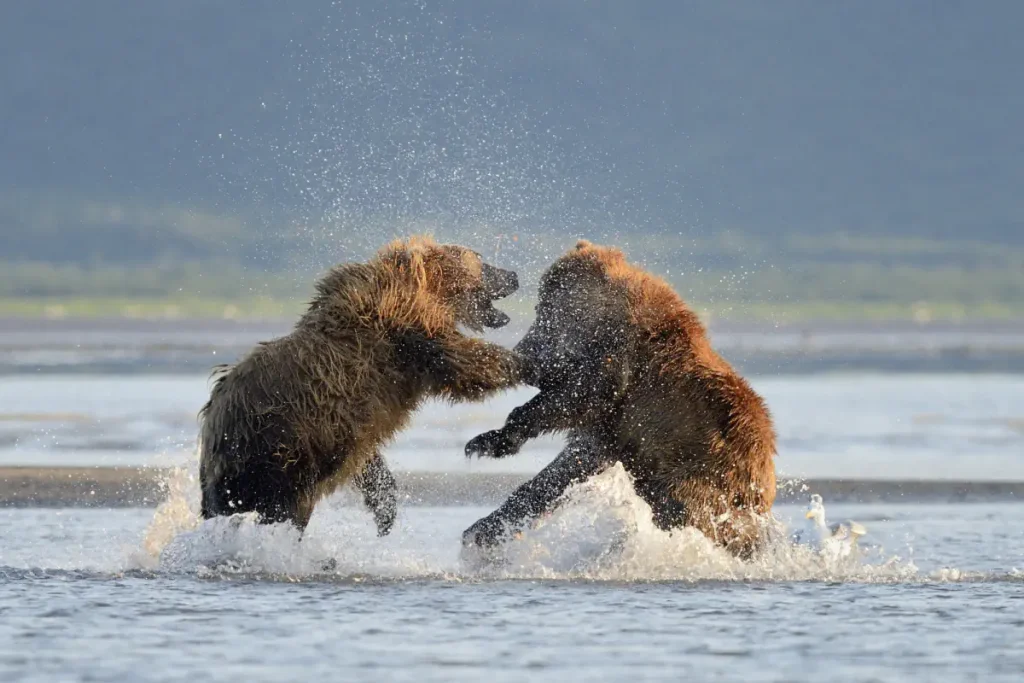
Related: 20 Amazing Grizzly Bear Facts
4. They are solitary animals
They are generally solitary in nature, like other bears and predators. Except for mating and for mothers with cubs, they prefer being alone. But, they can create large, dense groups in areas that are rich in food.
5. They can live up to 50 years under human care
Their average lifespan is 20-30 years in the wild, but, in captivity, they can live up to 50 years.
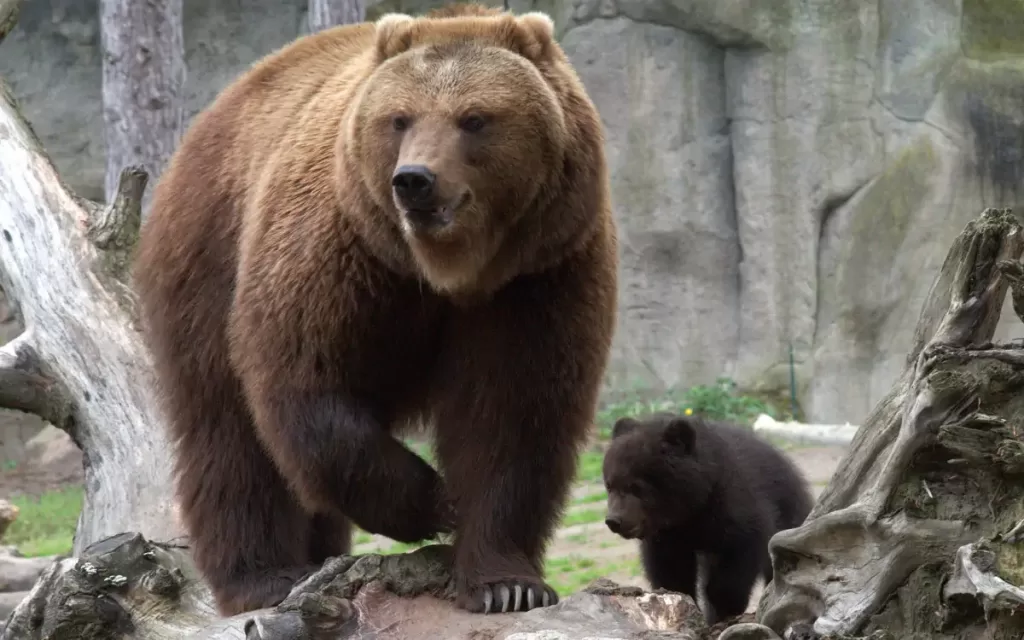
6. Females can begin to reproduce at 4 years old
Female Kamchatka brown bears begin to reproduce as early as 4 years of age. The typical litter size is 3-4 cubs.
7. They can travel long distances
According to the Wildlife Conservation Society (WCS) research, Kamchatka brown bears maintain a home of at least 12 km2 (4.63 sq mi). This range can extend greatly: when salmon and other food sources are scarce, their home ranges can be as large as 1100 km2 (424.7 sq mi).
Data from GPS-collared bears showed that they can make movements of up to 65 km (40 miles) and cross Kamchatka’s central mountain range to access different salmon runs.

8. Their population is healthy and productive
Kamchatka brown bears are still numerous. Their population is estimated at 8,000-14,000 bears in an area about the size of California (see notes 1). In fact, the Kamchatka peninsula is home to the densest population of brown bears in the world.
There are threats, however: as a result of the growing human population, agricultural and countryside housing development, road construction, logging, mining, and recreation have increased the number of bear-human contacts in recent years.
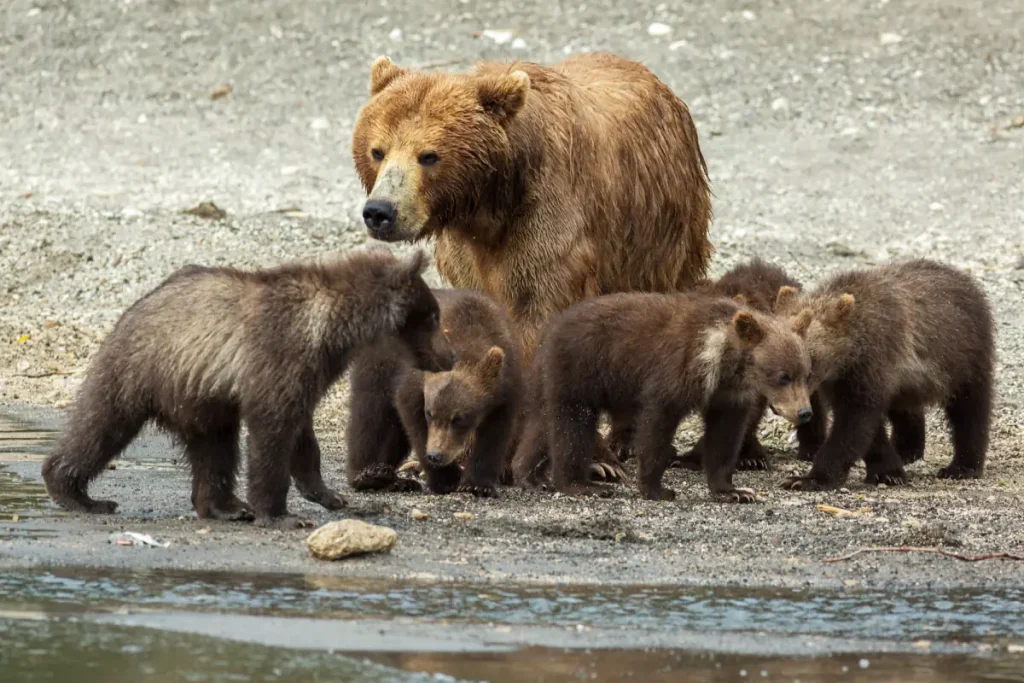
9. Kamchatka brown bears are not aggressive to humans
They are considered not dangerous to humans. Most of the time, they avoid humans. Statistically, only about 1% of human-Kamchatka brown bear encounters result in an attack. This is mostly because of a large food supply in the Kamchatka peninsula and low human population density.
They are also herbivorous, so, when one kind of food is not abundant, Kamchatka brown bears simply will change their diet instead of starving and as a result of starvation, being aggressive.
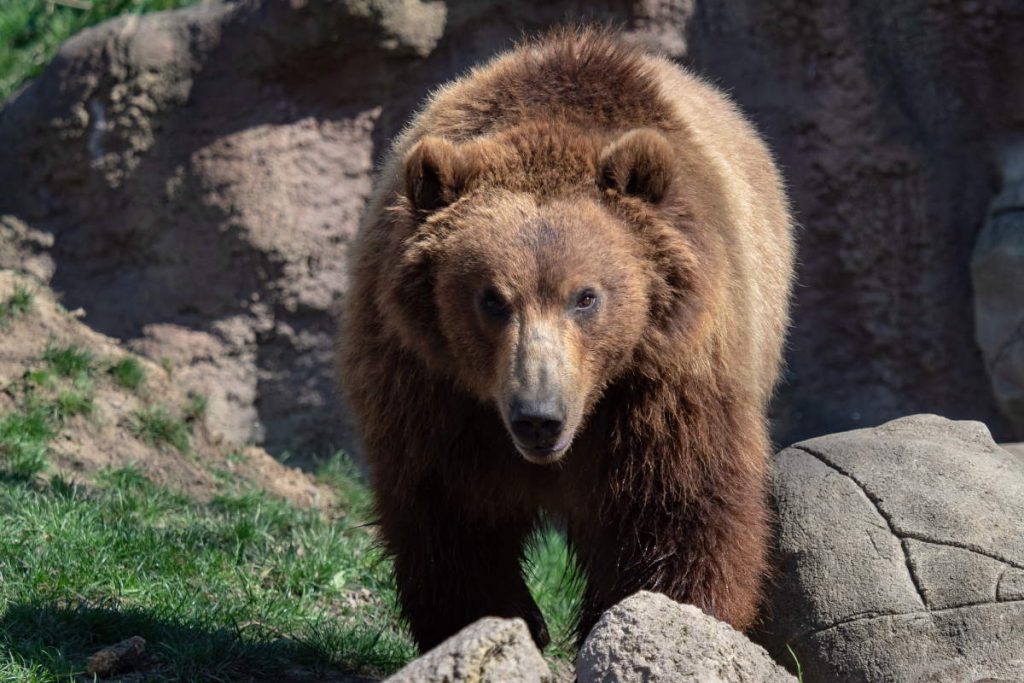
Compared to their Siberian counterparts (the East Siberian brown bear, Ursus arctos collaris), they are relatively harmless, as also noted by the first Europeans to come to the Kamchatka peninsula in the 18th century.
According to the International Conference on Bear Research and Management, the Kamchatka brown bear’s reaction to humans in South Kamchatka Refuge in 270 cases were (Igor A. Revenko; Kamchatka Ecology and Environmental Institute, Russia):
- avoidance (frightened huff-huff and run away, run a short distance and then walk away slowly, just walk away slowly, or disappear silently: 190 (70%).
- studying of humans, approach, identify, and then walk away: 38 (14%).
- indifference (simply ignoring humans): 34 (12%).
- threat demonstration: 8 (3%).
- attack of humans: 2 (1%)
In 2008, however, around 30 starving Kamchatka brown bears besieged a mining camp and killed two guards.
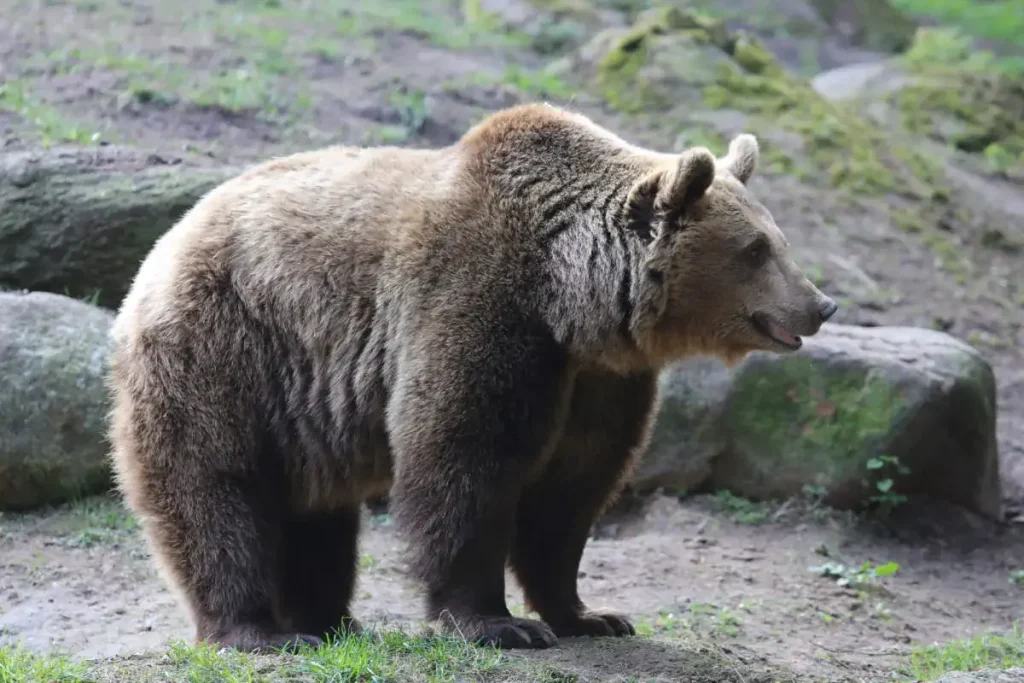
Related: Amazing Kodiak Bear Facts
10. Bear viewing is a popular tourist activity
There are tours where tourists can watch the Kamchatka brown bears from a distance of several meters.
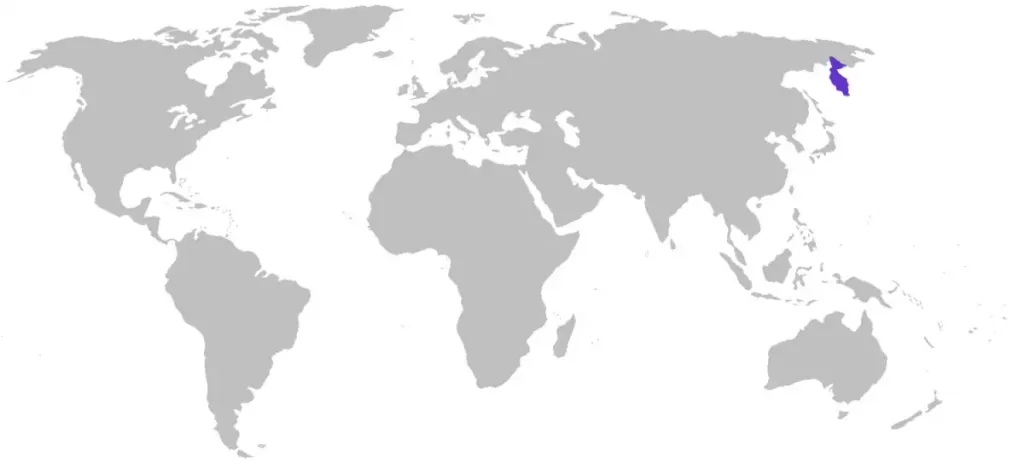
Some not-so-amazing Kamchatka brown bear facts
Kamchatka brown bears are under the threat of poaching, overhunting (trophy hunting, unfortunately, is common), and habitat loss.
Hunters kill about 300 brown bears a year from the Kamchatka Peninsula. There are also about 500-1500 bears becoming victims of poaching each year.
Notes
- According to the Wildlife Conservation Society (WCS) Russia website, “Kamchatka brown bear population counts for the region are based largely on the casual observations of hunters and forest workers and are scientifically questionable. More than a decade has passed since the last aerial survey of the region, and there is a desperate need to redefine survey methods to monitor the long-term trends in the bear population”.
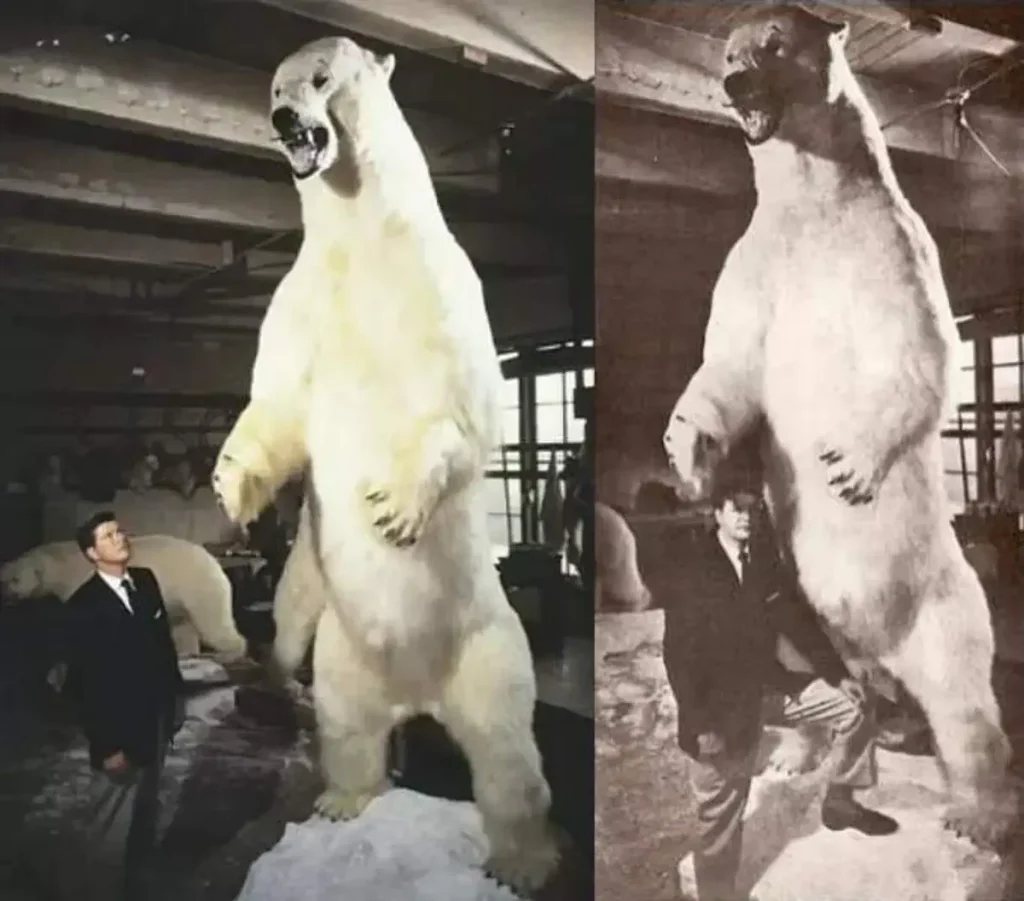
Related: 20 Amazing Polar Bear Facts
Sources
- Kamchatka brown bear on Wikipedia
- Brown bear reaction to humans on the Kamchatka Peninsula, International Conference on Bear Research and Management. IGOR A. REVENKO, Kamchatka Ecology, and Environmental Institute. PDF
- “The Kamchatka Brown Bear” on the Kamchatka Peninsula website
- “A review of bear evolution”. BRUCE MCLELLAN, Forest Sciences Research Branch, Revelstoke Forest District, RPO#3, Box 9158, Revelstoke, BC VOE 3KO; DAVID C. REINER, U.S. Fish and Wildlife Service, NS 312, University of Montana, Missoula, MT. PDF
- “Up to 30 hungry and desperate bears have attacked and eaten two men in Russia’s wild far eastern region of Kamchatka, and have trapped a group of geologists at their remote site.” The Guardian
- Kamchatka brown bear (Far Eastern brown bear) on the Bear Conversation website
- Kamchatka brown bears on the Wildlife Conservation Society (WCS) Russia website
- Moon Landings: All-Time List [1966-2025] - February 2, 2025
- What Is Max-Q and Why Is It Important During Rocket Launches? - January 16, 2025
- Top 10 Tallest Rockets Ever Launched [2025 Update] - January 16, 2025
